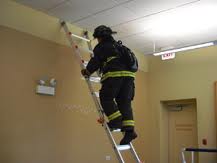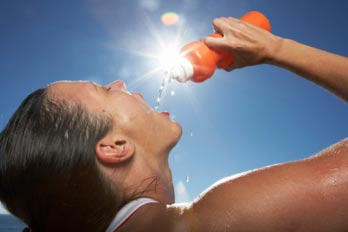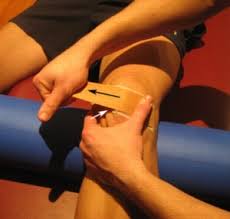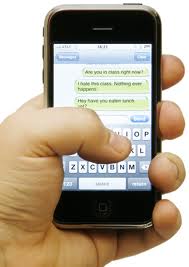What Is A FCE And How It Can Help You

A functional capacity evaluation (FCE) is an objective, functional evaluation of a series of tests administered to help determine current functional and physical status of a patient/client. Not all worker compensation cases need a FCE. Some injuries don’t limit work duties and many times physical and/or occupational therapy provides the healing and assistance to return a patient to work safely. But there are many benefits of a FCE:


 Industrial rehabilitation is a type of rehabilitation program aimed at helping an injured workers return to work safely and effectively and to help with prevention and reduction of work-related injuries. We must remember that industrial does not automatically mean that it is labor intensive. It includes jobs that are repetitive or that may involve awkward positions or motions. This type of program may include some if not all of the following types of programs/tests: physical and/or occupation therapy (worker compensation focused), Functional Capacity Evaluations (FCE), Work Conditioning, Work Hardening, Ergonomics, Job-Site Analysis, or Post-Offer Employment Test (POET).
Industrial rehabilitation is a type of rehabilitation program aimed at helping an injured workers return to work safely and effectively and to help with prevention and reduction of work-related injuries. We must remember that industrial does not automatically mean that it is labor intensive. It includes jobs that are repetitive or that may involve awkward positions or motions. This type of program may include some if not all of the following types of programs/tests: physical and/or occupation therapy (worker compensation focused), Functional Capacity Evaluations (FCE), Work Conditioning, Work Hardening, Ergonomics, Job-Site Analysis, or Post-Offer Employment Test (POET).
 Ever have neck and low back pain with pain and/or tingling and numbness down one or both arms or legs? If you have experienced this, you could have spinal stenosis. Spinal stenosis is a broad term that refers to any decrease in the openings in the spinal canal; it can occur along the entire length of the spine. The most common areas for its occurrence are in the cervical spine (neck) and the lumbar spine (low back) regions. Spinal stenosis can occur in the central spinal canal, putting pressure on the spinal cord, causing central stenosis. Lateral stenosis, where the spinal nerves exit the central spinal canal laterally, through openings called spinal foramina, is the most common form of spinal stenosis.
Ever have neck and low back pain with pain and/or tingling and numbness down one or both arms or legs? If you have experienced this, you could have spinal stenosis. Spinal stenosis is a broad term that refers to any decrease in the openings in the spinal canal; it can occur along the entire length of the spine. The most common areas for its occurrence are in the cervical spine (neck) and the lumbar spine (low back) regions. Spinal stenosis can occur in the central spinal canal, putting pressure on the spinal cord, causing central stenosis. Lateral stenosis, where the spinal nerves exit the central spinal canal laterally, through openings called spinal foramina, is the most common form of spinal stenosis. Summer is just around the corner, and temperatures will soon be heating up. Be smart with your training regimen in the hot days of summer to avoid a heat-related injury, some of which can be life threatening. It is especially important to know your training environment here in San Diego where the temperatures during the summer can vary from the 70°-80°s at the coast; 90°-100°s several miles inland and over 110° in the deserts. Not only is the temperature important but also the humidity level, which, again, can be moderate to high near the coast and very low further inland and arid in the deserts.
Summer is just around the corner, and temperatures will soon be heating up. Be smart with your training regimen in the hot days of summer to avoid a heat-related injury, some of which can be life threatening. It is especially important to know your training environment here in San Diego where the temperatures during the summer can vary from the 70°-80°s at the coast; 90°-100°s several miles inland and over 110° in the deserts. Not only is the temperature important but also the humidity level, which, again, can be moderate to high near the coast and very low further inland and arid in the deserts. Have you had difficulty with knee pain lately? Do you feel pain underneath and around your patella/kneecap after increasing mileage during runs or after training on hills? Do you have pain and difficulty going up/down stairs and curbs? After sitting through a movie, do you have to wait a few minutes before you can get up and walk out of the theater comfortably? If so, you may be suffering from patellafemoral pain, and we, at
Have you had difficulty with knee pain lately? Do you feel pain underneath and around your patella/kneecap after increasing mileage during runs or after training on hills? Do you have pain and difficulty going up/down stairs and curbs? After sitting through a movie, do you have to wait a few minutes before you can get up and walk out of the theater comfortably? If so, you may be suffering from patellafemoral pain, and we, at Americans spend an average of 2.7 hours a day on their cell phones. It is not uncommon for people to send dozens or even hundreds of text messages per day. This is common for both adults and teens. Recently a 14 year old ProActive PT patient was treated for texting thumb secondary to sending an average of over 300 texts per day. Mobile phone users are beginning to notice pain, tingling or numbness from excessive texting. Our dependency on texting to keep up with the Social Media has become a vital part of our life. “Giving your thumbs a rest” may not be a realistic solution in resolving symptoms associated with texting thumb for many of you.
Americans spend an average of 2.7 hours a day on their cell phones. It is not uncommon for people to send dozens or even hundreds of text messages per day. This is common for both adults and teens. Recently a 14 year old ProActive PT patient was treated for texting thumb secondary to sending an average of over 300 texts per day. Mobile phone users are beginning to notice pain, tingling or numbness from excessive texting. Our dependency on texting to keep up with the Social Media has become a vital part of our life. “Giving your thumbs a rest” may not be a realistic solution in resolving symptoms associated with texting thumb for many of you.